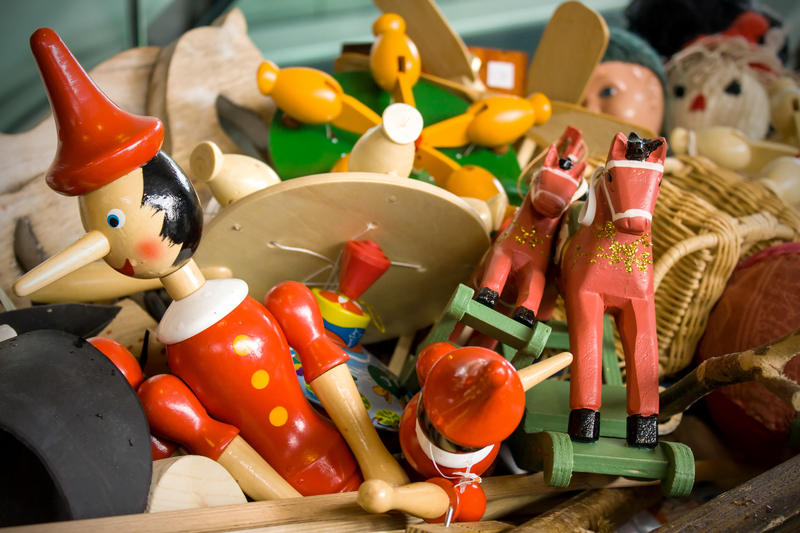How to Keep Your Surroundings Safe With Proper PPE Disposal
In recent years, the use of Personal Protective Equipment (PPE) has become increasingly common in our daily lives--not just for healthcare workers, but also for the general public. While PPE is essential for safeguarding our health, it's just as crucial to ensure that used PPE is disposed of correctly. Improper PPE disposal poses significant risks to public health, wildlife, and the environment. This comprehensive guide will cover how to keep your surroundings safe with proper PPE disposal, offering you practical steps and valuable insights.
Understanding the Importance of Proper PPE Disposal
PPE, such as masks, gloves, gowns, and face shields, plays an integral role in protecting individuals from infection and exposure to hazardous substances. However, when used PPE is discarded carelessly, it can contribute to:
- Spread of infectious diseases
- Litter and pollution in public spaces
- Threats to wildlife, who may ingest or become entangled in discarded items
- Clogged sewage and drainage systems
- Unsafe environments in workplaces, homes, and communities
Proper PPE disposal practices are more than just a responsibility--they are a necessity for maintaining safe, healthy surroundings for everyone.

Types of PPE and Their Disposal Challenges
Before diving into proper disposal methods, it's valuable to recognize the most commonly used PPE and the unique challenges each item presents:
- Surgical Masks & Respirators: Made from non-biodegradable materials, these can persist in the environment for years if not disposed of correctly.
- Gloves (Latex, Nitrile, Vinyl): Difficult to recycle due to contamination and material composition.
- Face Shields & Goggles: Often constructed with mixed plastics, complicating recycling efforts.
- Gowns & Aprons: Usually designed for single use, increasing potential waste.
Understanding your PPE types helps in choosing the best disposal method and preventing environmental harm.
Risks of Improper PPE Waste Management
Public Health Hazards
Used PPE may harbor infectious agents, including viruses and bacteria. Leaving masks or gloves in public areas creates a risk for others who might come in contact with them, potentially leading to new infection chains.
Environmental Impact
Improperly discarded PPE can end up in streets, rivers, and oceans. These materials can take centuries to decompose, during which time they pollute the environment and harm wildlife.
Wildlife Threats
Animals, particularly marine life and birds, frequently ingest or become trapped in PPE. Such incidents can be fatal and also disrupt local ecosystems.
Steps for Proper PPE Disposal: Keeping Surroundings Safe
Implementing safe PPE disposal practices is straightforward and highly effective. These steps will help ensure that your PPE waste management is both responsible and impactful:
1. Segregate Used PPE
- Always separate used PPE from regular trash. Designate a specific bin or bag for used PPE if possible.
- For workplaces: Use color-coded bins (such as yellow or red) to differentiate infectious waste.
- For homes: Consider a dedicated lined trash bin for used PPE.
2. Secure and Seal Contaminated PPE
- Before disposal, always place masks, gloves, and other PPE in a leak-proof bag.
- Tie or seal the bag tightly to prevent spillage or accidental handling by others.
- Do not attempt to recycle single-use PPE unless specifically designed for recycling and accepted by your local recycling program.
3. Follow Local Waste Disposal Guidelines
- Check your local government's recommendations for disposing of used PPE--some may require it to go in general waste, while others have dedicated collection systems.
- For medical facilities and businesses, comply with all occupational safety requirements regarding biohazard waste management.
4. Do Not Litter
- Never leave used PPE in public spaces. Littering increases health risks and environmental pollution.
- Encourage others to dispose of PPE responsibly by leading by example and spreading awareness.
5. Wash Hands After Disposal
- Always wash your hands thoroughly after handling and disposing of PPE to further reduce any risk of contamination.
Best Practices for PPE Disposal in Different Settings
At Home
Households should:
- Have a separate, lined trash bin for used masks, gloves, or other PPE, preferably with a lid.
- Seal used PPE in a bag before placing it in the bin.
- Ensure the trash bin is emptied regularly and not accessible to children or pets.
In the Workplace
Workplaces, especially those in healthcare or industries using hazardous materials, should:
- Provide clearly marked bins for PPE disposal in accessible locations.
- Train staff on proper disposal techniques and the importance of compliance.
- Contract with professional waste management companies for the safe removal and treatment of contaminated waste.
Public Areas
Public spaces must:
- Install visible and well-marked PPE disposal bins.
- Encourage responsible disposal through signage and public awareness campaigns.
- Monitor and empty bins regularly to prevent overflow and reduce accidental exposure.
Healthcare Facilities & Laboratories
Healthcare providers handle significant quantities of PPE and must:
- Follow national and international biohazard waste protocols.
- Autoclave or incinerate contaminated PPE as per regulatory guidance.
- Ensure staff wear gloves and follow hand hygiene procedures even during disposal.
Innovative Solutions for Sustainable PPE Waste Management
As the world addresses the ongoing challenges of PPE pollution, several innovative strategies are emerging:
- Biodegradable PPE: Researchers are developing masks and gloves from compostable materials to reduce long-term environmental impact.
- PPE Recycling Programs: Some companies have established collection and recycling services for specific types of PPE, turning waste into new products.
- Community Clean-Up Initiatives: Local groups and organizations often organize PPE litter-picking events to keep neighborhoods debris-free and raise awareness.
How to Encourage Proper PPE Disposal in Your Community
Spreading the message about safe PPE waste practices is essential for creating long-lasting change. Here are some ways to encourage others:
- Education: Share information on why safe PPE disposal is vital through social media, flyers, and conversations.
- Accessible Disposal Options: Work with local authorities to install adequate PPE waste bins in busy areas.
- Leading by Example: By disposing of your own PPE responsibly and discussing its importance, you set a strong example for friends, family, and neighbors.
- Support Environmental Initiatives: Volunteer for or donate to programs that address PPE waste and promote recycling.
Legal and Ethical Responsibilities Related to PPE Disposal
Many countries and municipalities have set laws concerning the disposal of hazardous and infectious waste, including used PPE. Neglecting these guidelines can result in fines, penalties, and increased risk to community health.
- Organizations are required to provide proper waste bins and train staff on disposal methods.
- Healthcare facilities must label and handle PPE waste as "biohazard" or "clinical waste."
- Individuals are expected to avoid littering and to dispose of masks and gloves in accordance with local regulations.
Ethically, everyone bears a responsibility to prevent unnecessary harm by disposing of PPE safely and responsibly.

Frequently Asked Questions About PPE Waste Disposal
Q: Can used PPE be recycled?
Most single-use PPE, like masks and gloves, cannot be recycled through standard municipal programs due to contamination risk and material composition. Specialized recycling initiatives may exist in some areas--always check local guidelines.
Q: Is it safe to throw PPE in household trash?
Generally, yes, if you follow safe handling practices--placing PPE in a sealed bag and washing your hands after disposal. However, never discard PPE loosely or flush it; always follow your region's recommendations.
Q: What should I do if I see discarded PPE in public?
If you are comfortable, use a litter pick or gloves to dispose of the item in a proper bin. Wash your hands immediately afterwards. Alternatively, notify the relevant local authority or property owner so it can be handled safely.
Conclusion: Make Proper PPE Disposal a Priority
Practicing responsible PPE disposal is essential for reducing health risks, protecting the environment, and ensuring cleaner, safer surroundings for everyone. By understanding the importance of correct PPE waste management and following the recommended steps, you not only protect yourself but also play an important role in community safety and environmental preservation.
Let's all take responsibility for our actions and spread awareness on how to keep your surroundings safe with proper PPE disposal. Small steps, like carrying a spare bag for used PPE or advocating for more disposal bins, can have a huge positive impact. Together, we can build a safer, greener future.
